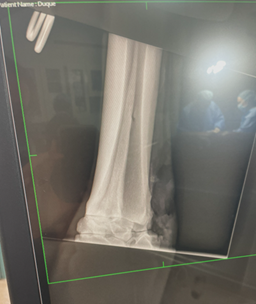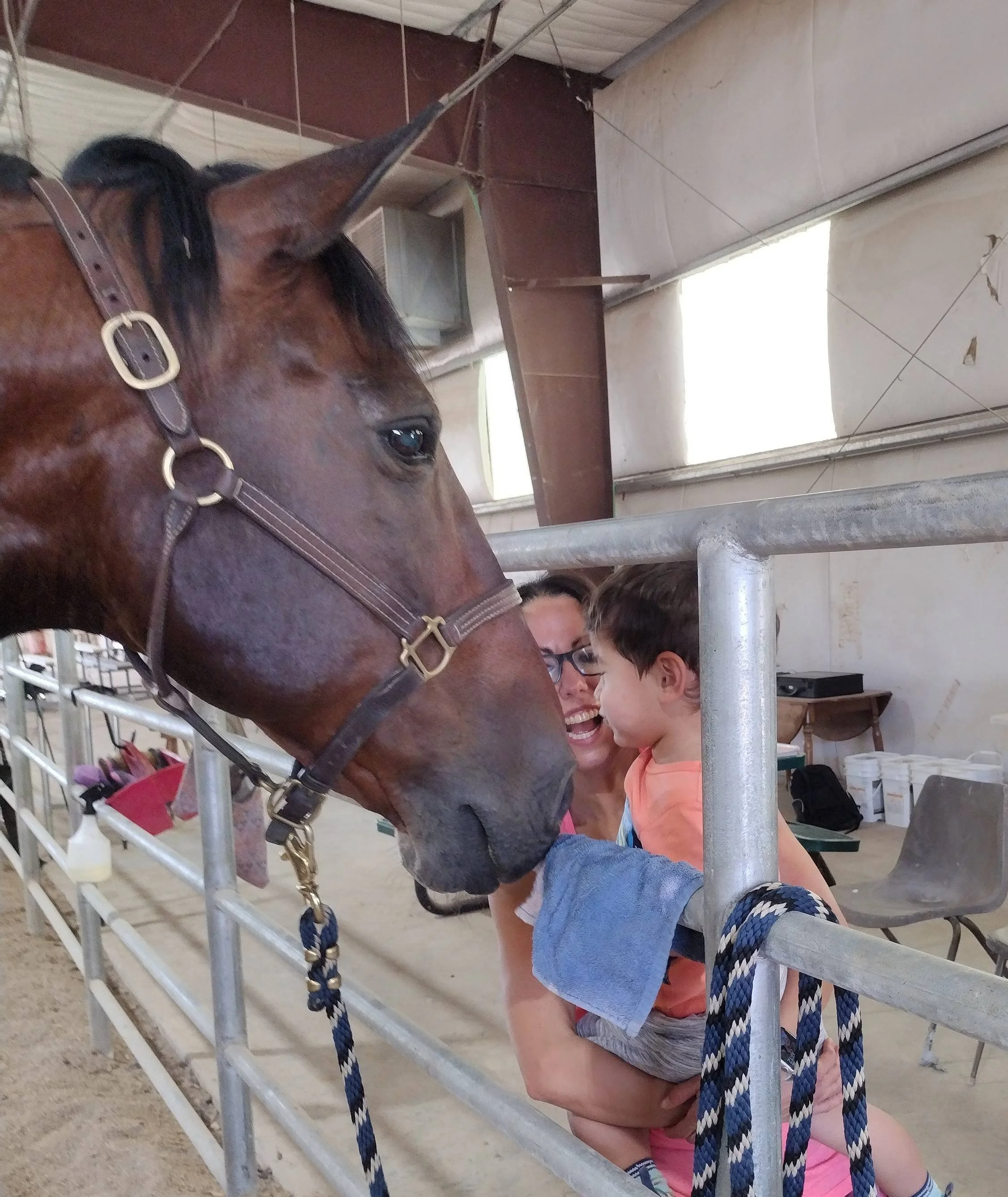Duque – Our First Success
Duque’s recovery is not only a success story but also the inspiration for EquiPhysics.
He was injured in a pasture accident, likely fighting over the fence with another gelding. Initial radiographs showed no fracture, which is not uncommon—fractures can take time to become visible. Meanwhile, a small cut at the site of the wound became infected, leading to cellulitis. He was put on oral antibiotics, and new radiographs revealed a fracture of the lateral splint bone in his right hind leg.
Duque went for surgery in Phoenix. Because of the cellulitis and location of the fracture, the procedure included the removal of the entire splint bone, including the section forming part of the hock joint. He remained in the clinic for a week of IV antibiotics, where the infection was stabilized. He then went to Miller Equine Rehab in Cave Creek for three months of intensive therapy, including cold saltwater spa treatments, shockwave therapy, and pulsed electromagnetic field (PEMF) therapy. The prognosis was poor. Because the entire splint bone was removed and complicated by infection, several veterinarians told me that Duque might never return to soundness.
Conflicting opinions left me searching for answers. As a biomechanics researcher, my background had been in jellyfish propulsion and insect flight. But faced with Duque’s injury, I turned my academic skills toward horses. I began reading veterinary literature directly and came across Baxter et al. (1992), which reported good outcomes after complete removal of the fourth metatarsal bone in eight horses. This gave me a scientific basis to hope for Duque’s recovery and guided me to pursue rehabilitation cautiously.
Duque’s rehabilitation was long and structured. Nine months of stall rest and hand-walking in Tucson gradually gave way to short sessions of free trotting, lunging, and eventually mounted walking and trotting. Step by step, we designed his exercise program the way I would design an experiment: carefully increasing load, documenting responses, and validating progress with objective gait analysis.
Today, Duque is sound and in work. He has begun classical dressage exercises such as shoulder-in and haunches-in at the walk and trot. Just as importantly, he has become our most trusted demonstration horse. He stands quietly, moves like a metronome on the lunge line, and takes applause, microphones, and projectors in stride. He is the horse our students meet first, and he makes biomechanics visible. Duque’s journey reshaped my research. His injury and recovery marked my transition from studying biomechanics in the ocean and the air to biomechanics in the horse. He embodies the mission of EquiPhysics.


